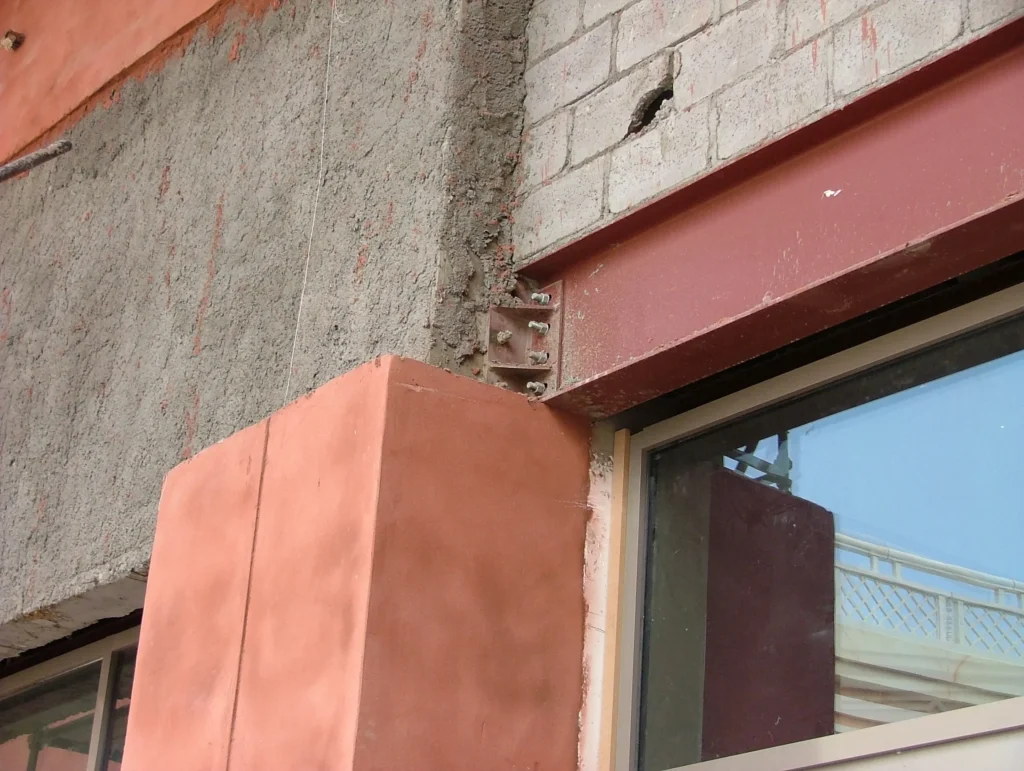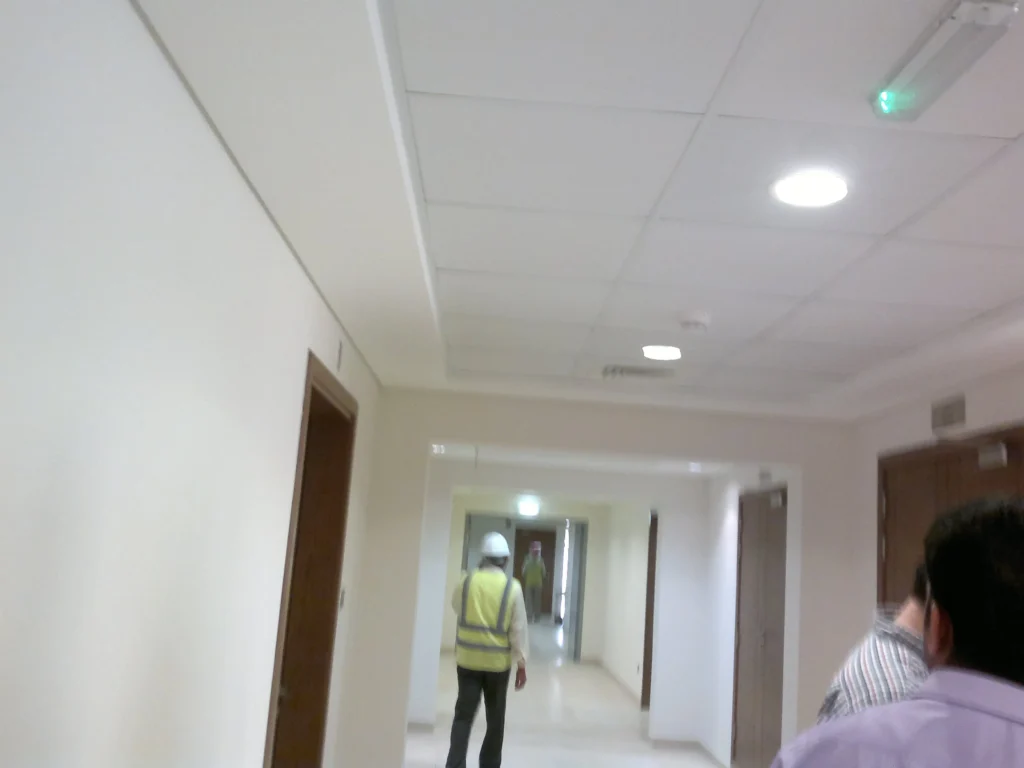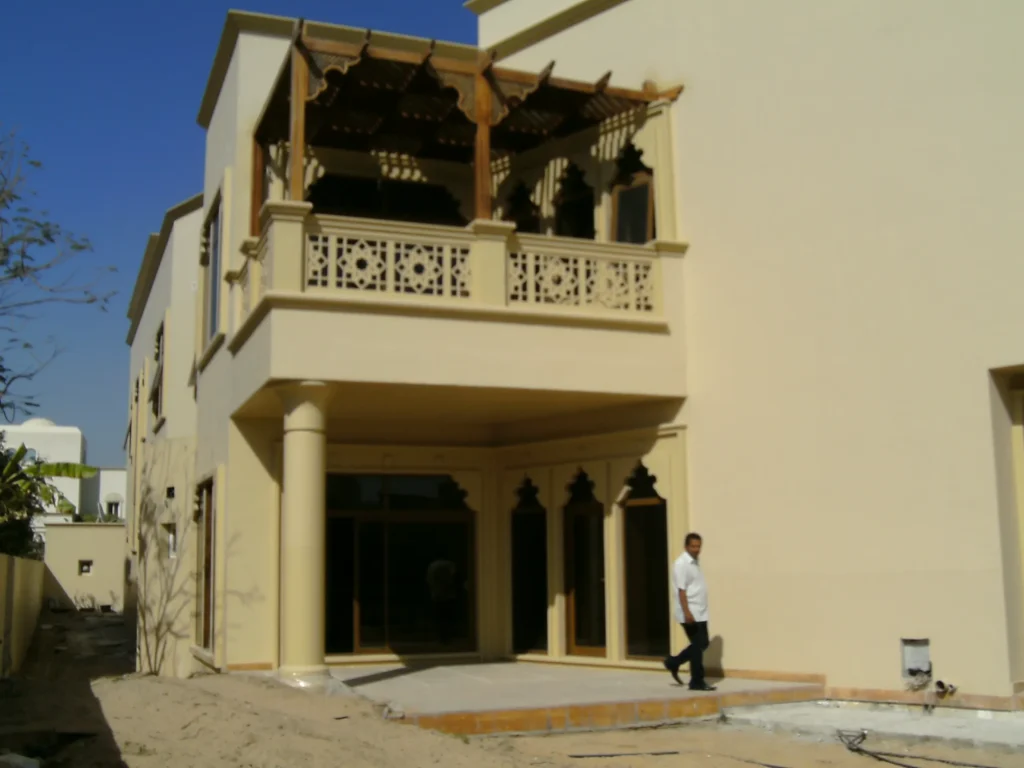Architects / 12 site supervision steps: architect’s Responsibilities is the eighth article 7,6,5,4,3,2 of a series. To share and illustrate the author’s years of architectural supervision experience. The experience of supervising various types of projects and functions. Such as functions related to human residential, commercial, leisure, sports, other industrial, and military projects. Projects I worked on and supervised, for example district cooling plant of Abu Dhabi Airport. An industrial building that supplies the airport with chilled air. Additionally, other projects, such as Emirates Industrial Bank, of a mixed-use function. Privately funded school building with a sports hall.
This article shows the site supervision architect’s responsibilities in the site supervision project, especially with a large-scale project. Architects’ responsibilities differ depending on the architect’s position on the project site.
Moreover, I will show the instructions flow from lower level and up level and vice versa in the site project. I will explain every position, supervision activities, and examples from real projects in professional practice.
Following in the paragraph, I present the major architects’ responsibilities and characteristics of every profession in the site project. Specifically, instructions flow, documents related, activities, and what he executes of the four major roles in the site project. Certainly, the four major include monitor, control, inspect, and review.
The site inspector’s responsibilities
The project’s architects team includes several professionals the site inspector at the lower level. Because he comes at the lower level, he has the smallest responsibilities of all team.
Inspectors normally hold a two-year diploma in architecture, institute-level certification, with a number of years of experience in site supervision. In fact, some consultants accept an inspector for specific projects if he has high-level experience with high quality consultant without a diploma.
The inspector’s responsibilities in the site project include:
- Carry out instructions from higher-level positions the site architect and company high-level positions, such as the design manager and the manager.
- Correspond and communicate with the contractor during the execution of a site activity.
- Report, verbally or in writing, the quality of activities works.
- Report works problems and defects in the activity carried out on the site project.
- Check and follow up as per the received instruction on the number of contractor execution team and compliance with the project management plan.
- When to take action on no-follow instruction and the procedure to report to the supervision higher level.
- Check the progress of certain activities on the site daily and their compliance with work standards. See Figure 1, external plaster paint for mall project.
- Because the inspector has direct connection to contractor labor, he, in some cases, takes the responsibility of preparing the site offices, appliances, and supervising cleaning labor occasionally.

For example, an inspector works responsibility for the contractor’s work of installation of ceramic tiles, fittings, and preparation works for bath bathroom. Instructing on the preparation of walls, for example, cracks, joints, and debris.
Install mesh on cracks and joints and clean debris and apply cement syrup to walls. Because these tasks affect the final installation quality, the inspector focuses on them. Contractor must install ceramic tiles as per the approved shop drawing patterns, shapes, and specifications, certainly to avoid failure leading to fines.
Before applying the last layer of ceramic tiles and fittings inspector checks material compliance with the material submittal approvals. Ceramic tiles installed must have proper spacing to receive grout and to match the internal ceramic layout in the shop drawing.
The inspector should instruct the contractor to install fittings at the same location in the construction drawings and check leveling and proper work. Inspectors follow up on keeping all fittings and installed materials safe from damage and report if not to the higher level.
Indeed, as I have shown, the inspector takes two of the major roles of an architect’s responsibility in the site project, the inspection and monitoring of the related activity.
site supervision architect’s responsibility of a site architect
A site architect holds on step higher position than the inspector. A site architect normally holds a degree in architecture and several years of experience in site supervision projects. In order to work in this position, he should have continuous work experience in the same position and have completed some projects.
The site architect’s responsibilities in the site project include:
- Checking up on the scheduled tasks of the site inspector’s work.
- Follow up on the activity execution timetable as per the project management plan.
- Because transferring data and information holds a high priority in the site project. The site architect communicates and discusses reports coming from inspectors occasionally.
- Giving instructions and a scheduled task for the inspector, prepared previously at a higher level (ARE).
- Report of non-follow activities of the project execution plan.
- Prepare initial report, daily-weekly-monthly, as required, and agreed with all involved parties of the site project.
- Certainly, meeting with the ARE as per schedule to discuss matters of defects, activity execution schedule, activity timetable, new instructions from higher level, and reporting of all activities.
- Initial review material submittals samples and related documents, and shop drawings compliance with project project-agreed contract. Additionally, Inspection requests, method statements related documents, contracts, and change order submittals related to site activities, if required. Correspondence papers or emails.
- Inspection of work activities and completed tasks.
For example, the site architect site supervision work, the installation of false ceilings in internal building spaces. The site architect normally relies on the inspector’s supervision work and reports, but on certain occasions, he proceeds with inspection.
Due to the extreme importance of this activity, false ceiling installation, the site architect inspects at two points in the execution timeline. After all false ceiling parts installation, including ceiling bolts carrying the ceiling, suspension rods, and the two-way metal channels, inspection is required.
In order to check the accuracy of bolt locations, the correct depth of hanging metal channels is required. Additionally, the site architect meets with mechanical engineers to check the final locations of air conditioning grills, diffusers, light fitting’s locations, and piping running directions.
The site architect inspects before installing the false ceiling panels the locations of the former mounted mechanical hardware. Also, to remind the contractor of any forgotten matters or changed locations that exist.
The inspection should focus especially on checking the levels of the false ceiling with shop drawings and the clear space heights with interior components. Leveling of the last layer of the ceiling, and if any damage exists in the fixed panels, for removal.
In addition, remind the contractor of the proper fixing of the external parts of the mechanical hardware and light fittings. See figure 2, final check of false ceilings by the site architect for a building.

The site architect’s responsibilities include from the major roles of site supervision the following: reviewing documents and drawings, inspecting activities, monitoring inspector works activity progress, and controlling works at site in conjunction with ARE.
Site supervision architect’s responsibility of the ARE
The highest level of the architect’s team on the site lies the assistant resident engineer (ARE). The ARE holds a bachelor’s degree and, in special cases, a master’s degree in construction management. Additionally, he must have previous experience in the same position and have completed at least a couple of projects.
The ARE responsibilities in the site project include:
- Kick off meeting with the client and contractor, and authority officials.
- Weekly progress meetings with the client.
- Final review of material submittals and approval.
- Final review of method statement documents and approvals.
- Final review of shop drawings and approval.
- Review any architect’s side for any change orders for architecture activity.
- Review contractors’ dispute matters and gives a report.
- Submits any change order regarding the consultant agreement with the client.
- Issue and approve the weekly and monthly reports for all the site involved companies.
- Attends scheduled coordination meetings with civil, mechanical teams.
- Coordinate any modifications in construction drawings and any related authority approval.
- On-demand presentation of company works to companies on-site.
For example, a change order works. The ARE receives a request from the client to change all corridor materials to normal porcelain material instead of marble.
First of all, because this change affects the total project price, and moreover, the item BOQ price. Second, the consultancy fees, if based on construction price, definitely impact consultancy fees. In addition to that, this might impact the project completion timeline, and an extension will be required.
For that, the contractor might bid an extra price for the total construction cost. See figure 3, the architect’s team conducting a final check for villa finishing works.

The ARE in conjunction with the RE study these matters and submit a report after the approval from the consultant first. Then the contractor will review and accept. Finally, the report goes to the client for approval.
[…] Architects / 12 site supervision steps: architect’s Responsibilities […]
[…] Architects / 12 site supervision steps: architect’s Responsibilities […]
[…] Architects / 12 site supervision steps: architect’s Responsibilities […]
[…] Architects / 12 site supervision steps: architect’s Responsibilities […]
[…] Architects / 12 site supervision steps: architect’s Responsibilities […]